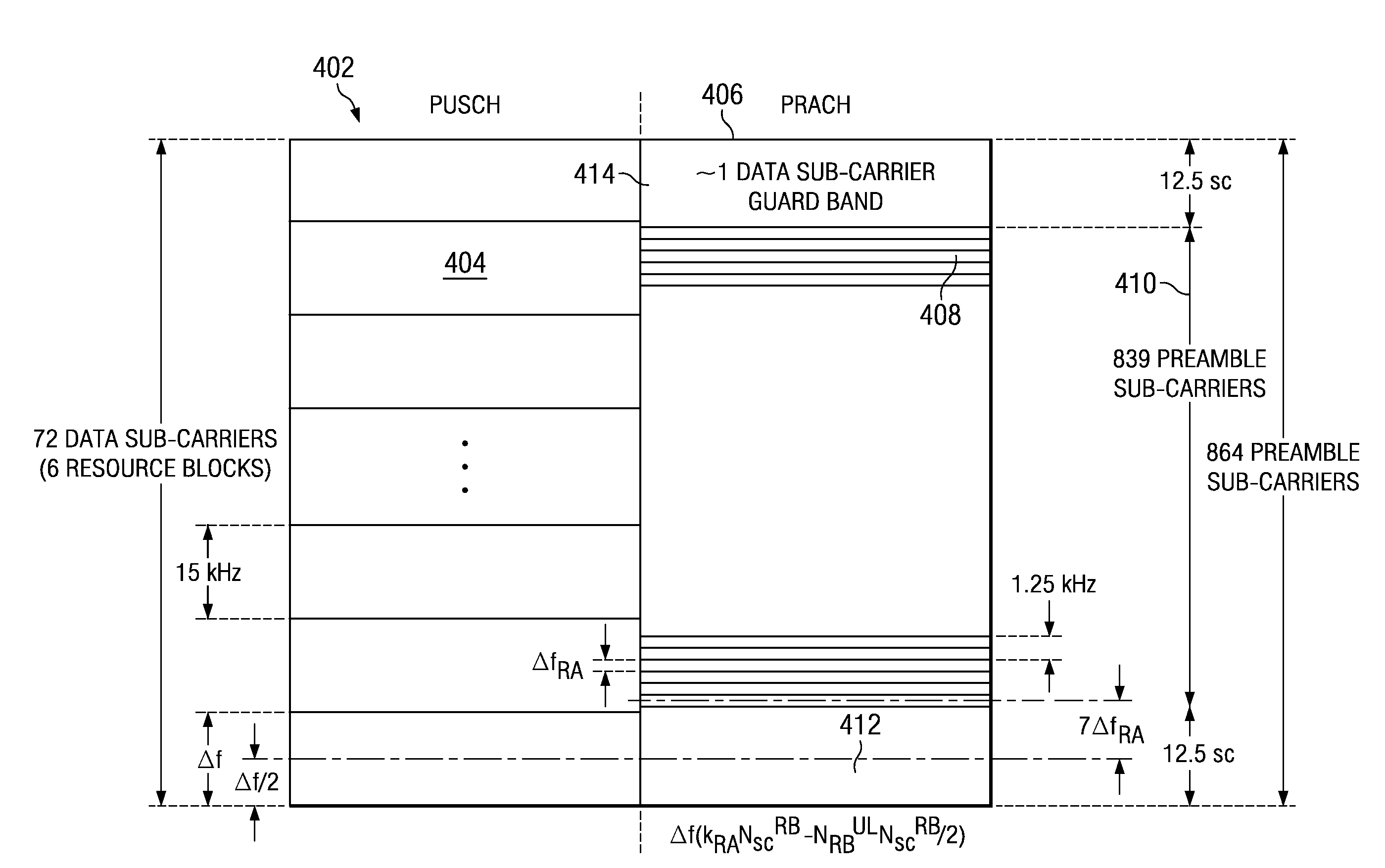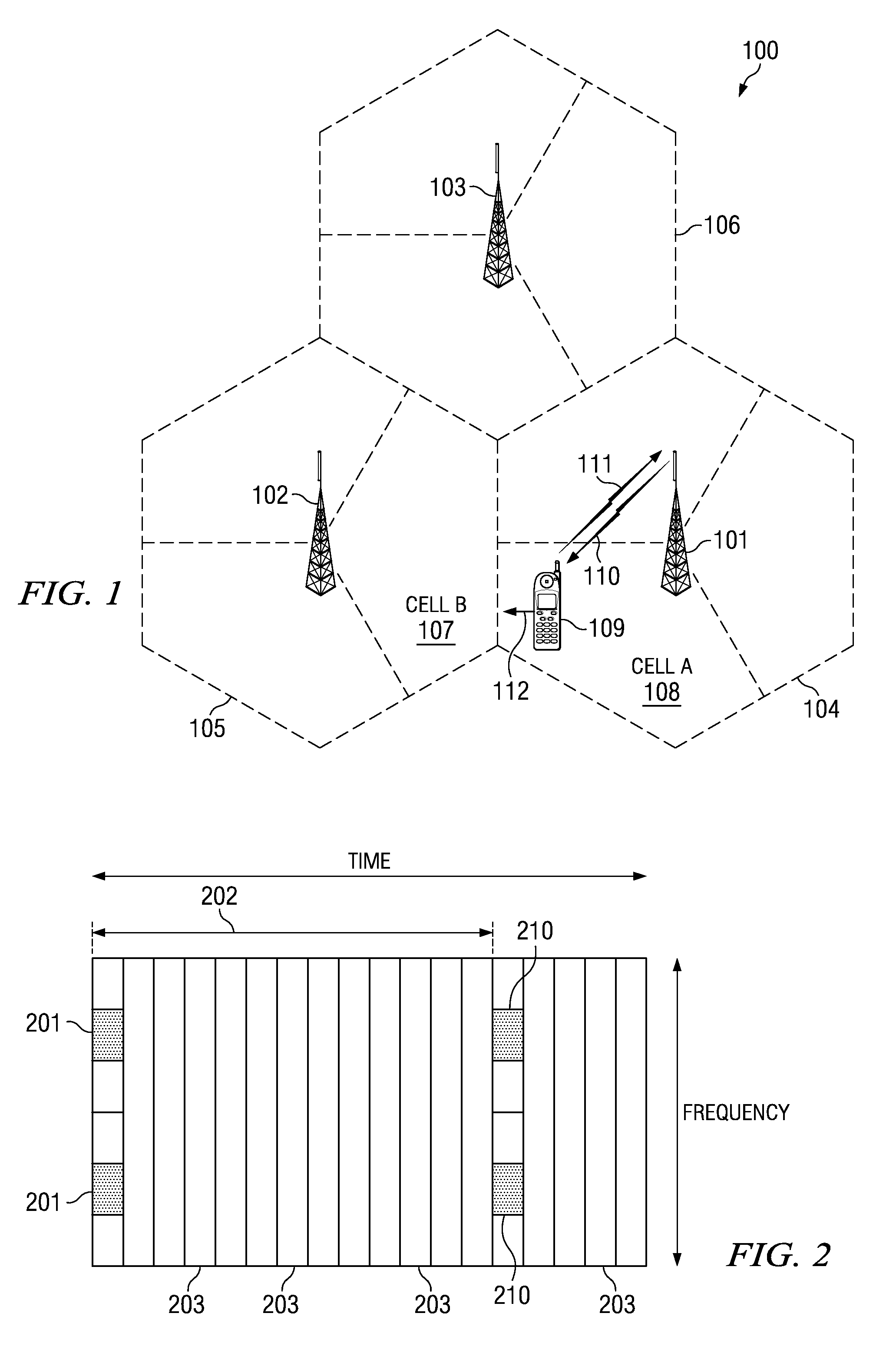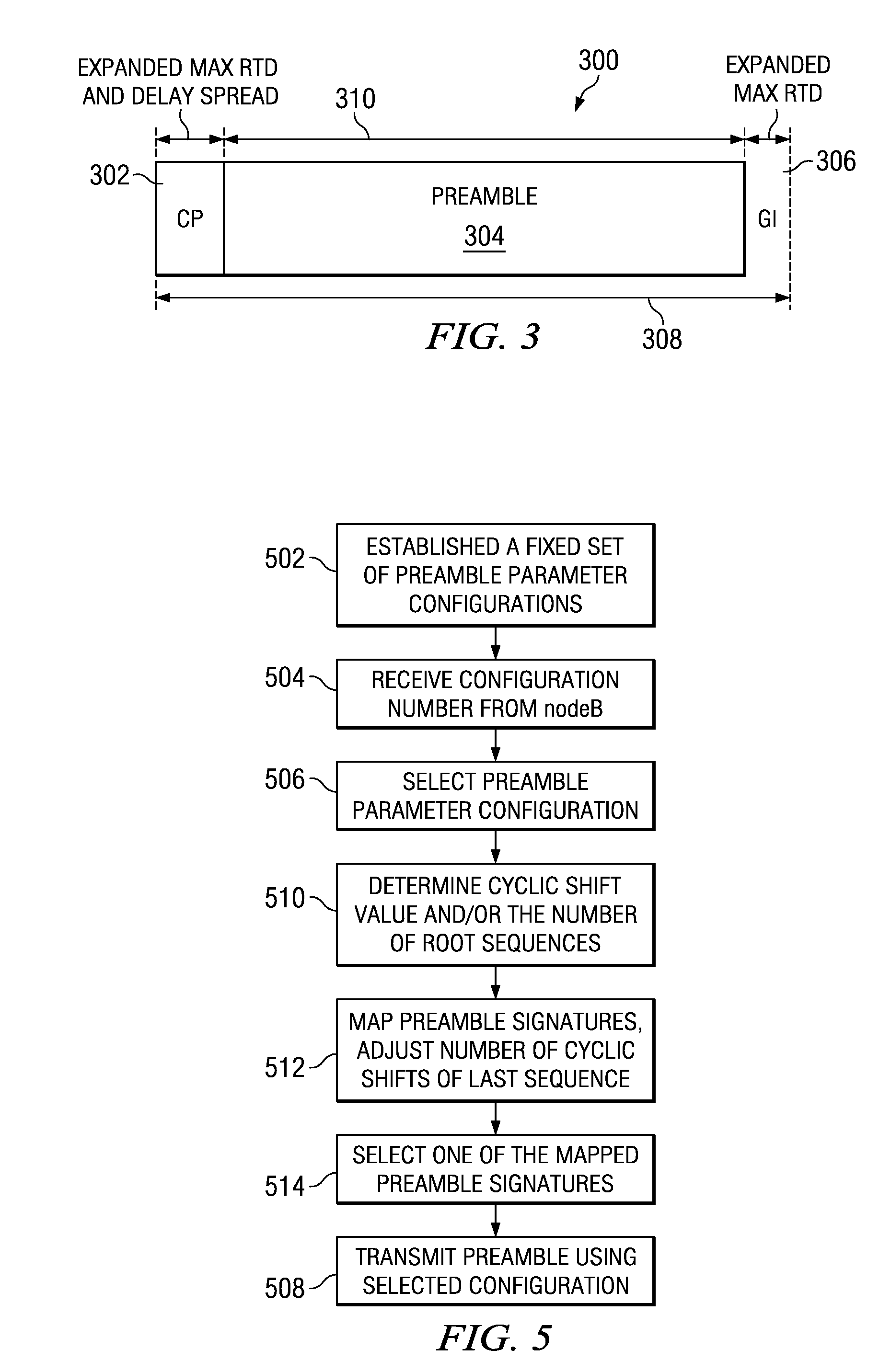Signaling of Random Access Preamble Parameters in Wireless Networks
- Summary
- Abstract
- Description
- Claims
- Application Information
AI Technical Summary
Benefits of technology
Problems solved by technology
Method used
Image
Examples
Embodiment Construction
[0030]Disclosed herein are various systems and methods for employing a random access channel in a wireless network to accommodate user equipment operating in cells of varying sizes. Embodiments of the disclosed invention may be used to access a wireless network, such as a telecommunications system, employing random access techniques. A variety of wireless networks employ random access techniques, for example the Enhanced Universal Terrestrial Radio Access Network (E-UTRAN), currently being standardized by the 3GPP working groups. The disclosed embodiments of the invention are applicable to all such networks. The disclosed embodiments include apparatus for transmitting random access signals and a method for transmitting a random access signal optimized for cellular coverage.
[0031]Embodiments of the present disclosure are directed, in general, to wireless communication systems, and can be applied to generate random access transmissions. Random access transmissions may also be referred...
PUM
 Login to View More
Login to View More Abstract
Description
Claims
Application Information
 Login to View More
Login to View More - R&D
- Intellectual Property
- Life Sciences
- Materials
- Tech Scout
- Unparalleled Data Quality
- Higher Quality Content
- 60% Fewer Hallucinations
Browse by: Latest US Patents, China's latest patents, Technical Efficacy Thesaurus, Application Domain, Technology Topic, Popular Technical Reports.
© 2025 PatSnap. All rights reserved.Legal|Privacy policy|Modern Slavery Act Transparency Statement|Sitemap|About US| Contact US: help@patsnap.com



